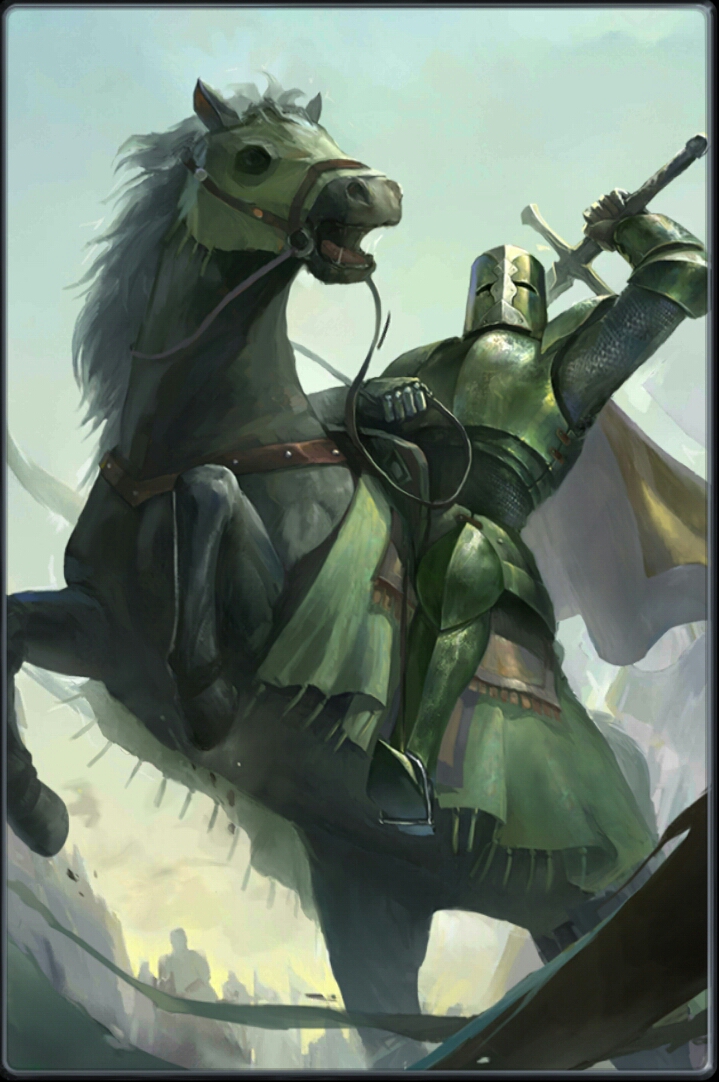

This figure represents a symbol of rebirth, the cycle of new growth that occurs every spring. He has also been associated with the medieval Green Man of European folklore. He waits for him at the Green Chapel and represents the last obstacle in the hero’s journey. Finally, the Green Knight takes the role of a monster in Gawain’s journey. On being decapitated, he picks up his head, which continues to speak in his hand, and he places it back on his body the following year. Second, going further, we can observe he represents the spirit of vegetation. First, the connection with nature is clear from his clothes, armor, green skin, and horse. The Green Knight represents a unity of two concepts, nature, and chivalry. Significance and Symbolism in Sir Gawain and the Green Knight Green Man relief, Birkenhead Central Library, via Wikimedia Commons This is a figure leads a hunting party through the sky, and he is usually condemned on account of some crime to hunt for all eternity. The other face of the Green Knight, Bertilak, may represent a version of the Wild Huntsman of European folklore. Another predecessor could be the Muslim Green Man known as Kadr, whose lore was probably carried by crusaders back from the Holy Land. The first example is the giant Humbaba, guardian of the cedar forest of Lebanon in the ancient Mesopotamian Epic of Gilgamesh. Predecessors of the Green Knight may be traced back even to antiquity. Other examples include the middle Irish text, Bicriu’s Feast, and the French romances La Mule Sans Frein and Hunbaut. This custom has its source in a similar scene in the French Arthurian romance, Le Livre de Caradoc. One of the most significant moments in Sir Gawain and The Green Knight is the beheading “game”. Origins of the Green Knight Sir Gawain and the Green Knight, by John Howe, 2003, via Researchgate His role is similar in the other two texts. At the Green Chapel, it is revealed that he is a phantom created by Morgan le Fay to test Gawain and Arthur. Furthermore the two men agree that each time Bertilak gains prey while out hunting, or Gawain gains any gift in the castle, each shall exchange his gain for the other’s. He tests Gawain’s his loyalty and chastity by sending his wife to seduce Gawain. Next, he appears as Bertilak de Hautedesert, lord of a large castle, and Gawain’s host before his arrival at the Green Chapel. While Arthur accepts the challenge, it is Gawain who takes his place and decapitates the Green Knight, who retrieves his head and tells Gawain to meet him at the Green Chapel. He will allow one man to strike him once with his axe, with the condition that he will return the blow the next year. Here, he proposes a challenge to the knights present at the celebrations. He appears as the Green Knight during a Christmas feast at King Arthur’s court. In the Arthurian Legend found in Sir Gawain and the Green Knight, the knight has a double identity. What is the Role of the Green Knight Within Arthurian Legends? The Green Knight Arrives, by Clive Hicks-Jenkins, via The Old School Gallery, Alnmouth The Name and Image of the Green Knight Sir Gawaine and Sir Urwaine at the Runied Chapel, by William Morris, 19th century, via the Hopkins Collection The surviving version is contained in the 17th-century so-called Percy Folio manuscript, which resides in the British Library. The third text, King Arthur and King Cornwall is an Arthurian legend and ballad. In 1995, the text was edited and published by Thomas Hahn. Currently, it resides in the British Library. The second poem, The Greene Knight, is a late medieval rhyming romance discovered in a folio compiled in 1650. Sir Gawain and the Green Knight was first published in 1839. The text resides in the Cotton Nero A.x manuscript alongside three other Middle English poems: Cleanness, Patience, and Pearl. The first appearance of the Green Knight is in the 14th-century poem Sir Gawain and the Green Knight , an Arthurian legend written by the anonymous so-called Pearl Poet. The Context of Sir Gawain and the Green Knight A painting from the original manuscript of Sir Gawain and the Green Knight, c.


 0 kommentar(er)
0 kommentar(er)
